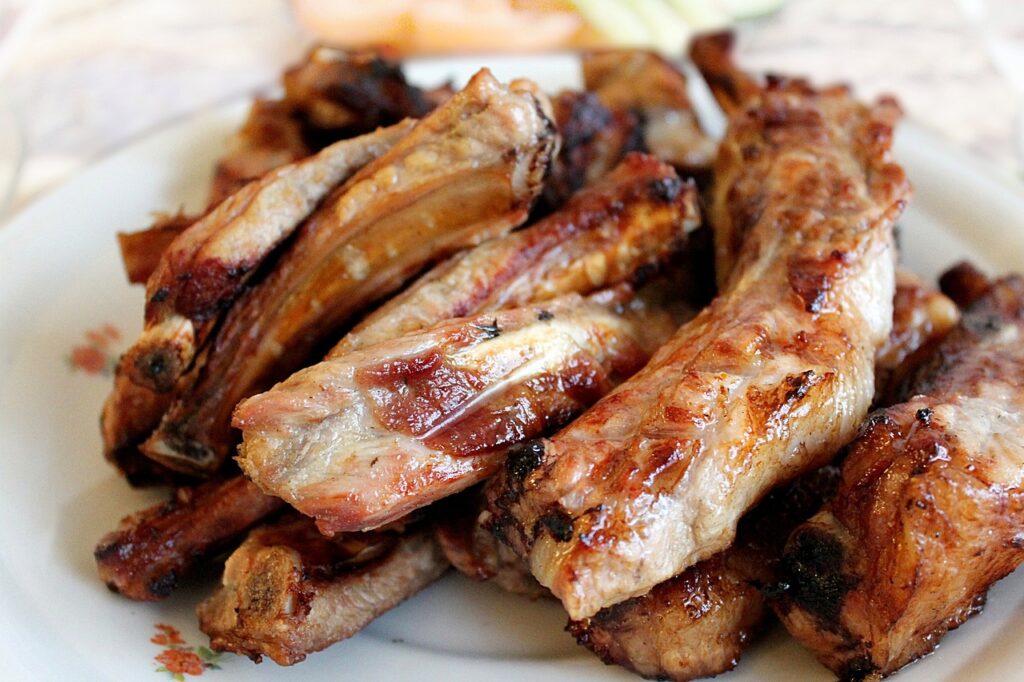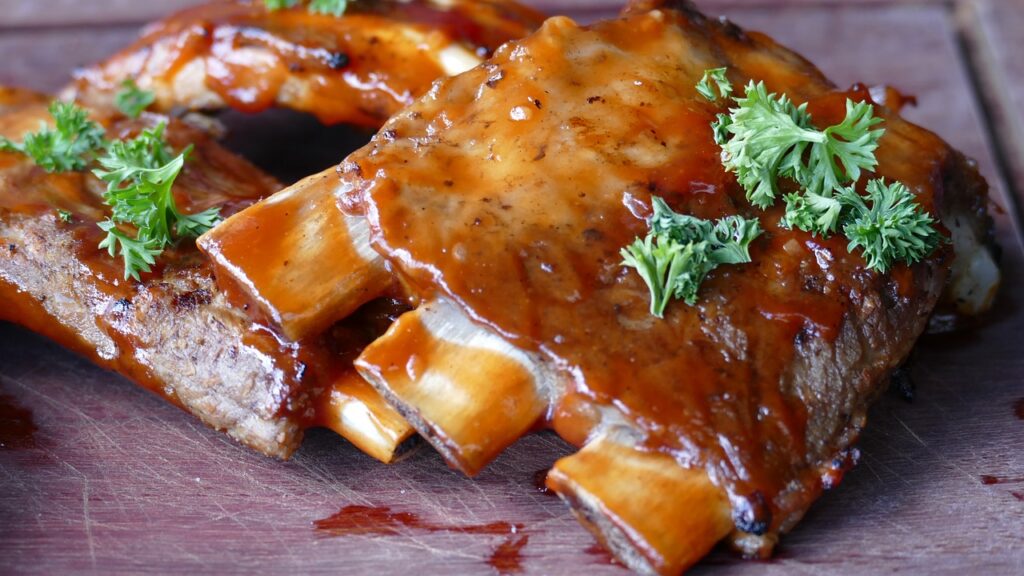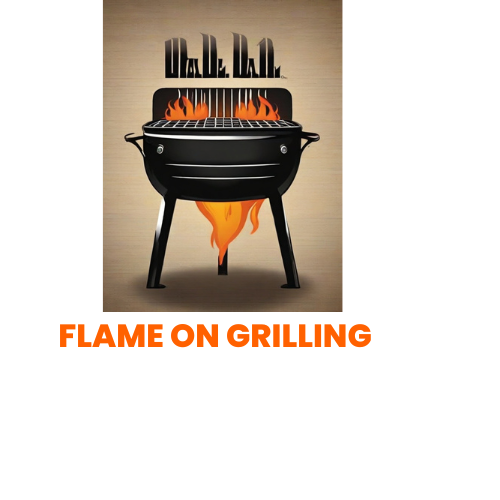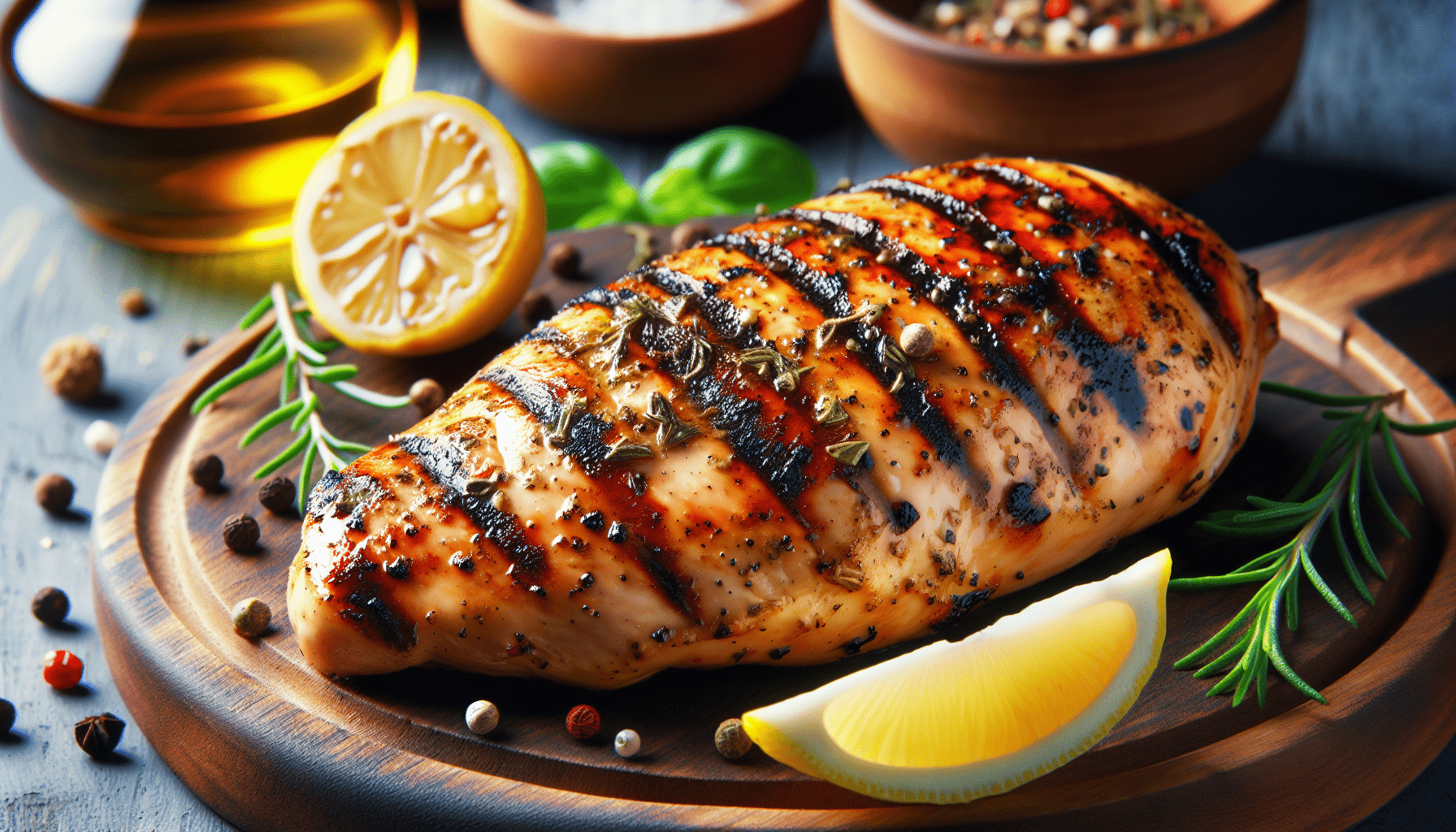If you’ve ever wanted to achieve perfectly tender and flavorful grilled ribs, look no further. This article is here to guide you through the process of mastering the art of cooking grilled ribs. From selecting the right cut of meat to perfecting the marinade and cooking technique, you’ll soon be impressing your friends and family with mouth-watering ribs. Get ready to elevate your BBQ game with this ultimate guide to mastering the grilled ribs recipe.
Choosing the Right Ribs
When it comes to choosing the right ribs for your grill, you have a few options to consider. Baby back ribs, spare ribs, and St. Louis Style ribs are all popular choices.
Baby back ribs are lean and tender, making them a favorite among many grill masters. These ribs are taken from the loin area of the pig, which makes them smaller and more curved. They are known for their tenderness and meatiness.
Spare ribs, on the other hand, come from the belly area of the pig. They have more meat and fat, which can result in a richer and more flavorful final product. Spare ribs are larger and flatter than baby back ribs. They require a longer cooking time to become tender and are often favored by those who enjoy a fattier cut of meat.
St. Louis Style ribs are a trimmed-down version of spare ribs. They have been trimmed to remove the cartilage and breastbone, leaving a rectangular-shaped rack. St. Louis Style ribs offer a balance of meat and fat, and are often seen as a compromise between baby back ribs and spare ribs.
Consider your personal preferences and the flavors you want to achieve when choosing your ribs. Whether you prefer lean and tender, meaty and flavorful, or something in between, there is a rib cut out there for you.
Preparing the Ribs
Preparing the ribs is an essential step in ensuring a delicious and tender end result. There are two key steps in preparing the ribs: trimming excess fat and removing the membrane.
The first step is trimming the excess fat. While some fat is necessary for flavor and moisture, too much can lead to greasy ribs. Use a sharp knife to carefully trim off any excess fat, being mindful not to remove too much. You want to strike a balance between flavor and texture.
After trimming, the next step is removing the membrane. This thin layer on the bone side of the ribs can prevent flavors from penetrating the meat and make the ribs tough. To remove it, gently slide a butter knife under the membrane and lift it away. If the membrane is stubborn, you can use a paper towel to grip it for better leverage. Removing the membrane will allow for better flavor absorption and create a more tender end result.

Creating the Perfect Dry Rub
A dry rub is an essential part of enhancing the flavor of your ribs. It adds layers of flavor and creates a delicious crust on the outside of the meat. Here are some tips for creating the perfect dry rub:
Choosing the right spices: The key to a great dry rub is choosing the right combination of spices. Common spices and herbs used in dry rubs include paprika, brown sugar, garlic powder, onion powder, chili powder, and cayenne pepper. Experiment with different combinations to find a flavor profile that suits your taste buds.
Balancing flavors: When creating your dry rub, it’s important to balance the flavors. Consider the desired level of sweetness, heat, and smokiness. Adjust the amounts of your chosen spices accordingly to achieve the perfect balance. Keep in mind that a good dry rub should enhance the natural flavors of the meat without overpowering it.
Applying the dry rub: Once you have your dry rub mixture, generously apply it to both sides of the ribs. Make sure to massage it into the meat for maximum flavor. Allow the ribs to sit uncovered in the refrigerator for at least an hour to allow the flavors to penetrate the meat. This step ensures that your dry rub has time to work its magic and infuse the ribs with its delicious flavors.
Marinating the Ribs
While marinating is optional for ribs, it can be a great way to add extra flavor and moisture. Here are some tips for marinating your ribs:
Choosing a marinade recipe: When selecting a marinade recipe, choose one that complements the flavors of your dry rub. Common ingredients in marinades include soy sauce, Worcestershire sauce, apple cider vinegar, and various spices and herbs. Marinating time and techniques will depend on the recipe you choose. Some marinades require only a few hours, while others recommend overnight marination for more intense flavor. Follow the instructions provided in your chosen recipe to ensure optimal results.
Marinating time and techniques: The amount of time you marinate your ribs will depend on the flavor intensity you desire and the recipe you are following. Make sure to follow your chosen recipe’s instructions for marinating time. To ensure even marination, turn the ribs occasionally while they are in the marinade. This will help ensure that all sides of the ribs are exposed to the flavors of the marinade.

Setting Up the Grill
Choosing the right grill is crucial for achieving the perfect grilled ribs. Whether you prefer charcoal or gas, it’s important to consider factors such as space, convenience, and personal preference.
Charcoal grills provide that classic smoky flavor that many people love. They require more attention to temperature control and flare-ups. If you choose a charcoal grill, you’ll need to arrange the coals evenly and light them using a chimney starter or charcoal lighter fluid. Allow the coals to turn white and ashy before placing the ribs on the grill.
Gas grills offer convenience and better temperature control. They allow for easy heat adjustment and don’t require as much attention as charcoal grills. If you choose a gas grill, preheat the grill to the desired temperature according to your recipe.
Regardless of the type of grill you choose, maintaining temperature control is essential for successful grilling. Adjust the vents or temperature knobs to maintain the desired temperature.
Preparing the Smoker
If you want to take your grilled ribs to the next level, consider using a smoker. A smoker can impart a delicious smoky flavor to your ribs. Here are some tips for preparing your smoker:
Using wood chips or chunks: When using a smoker, you’ll want to use wood chips or chunks to create smoke and add flavor. Different types of wood chips or chunks will impart different flavors to your ribs. Popular choices include hickory, applewood, and mesquite. Soak the wood chips in water for at least 30 minutes before grilling to ensure they smolder and create a steady smoke.
Indirect grilling: Indirect grilling is the preferred method when using a smoker. This means placing the ribs away from direct heat, allowing them to cook slowly and absorb the smoky flavors. Follow your smoker’s instructions for setting up the coals or gas burners for indirect grilling.
By using a smoker, you can infuse your ribs with a smoky flavor that will take them to the next level.

Grilling Techniques
There are a few grilling techniques to consider when cooking your ribs:
Direct grilling involves placing the ribs directly over the heat source, resulting in a faster cook time and a slightly charred exterior. This technique is great for achieving a crispy crust and a more intense flavor.
Indirect grilling, on the other hand, involves cooking the ribs away from direct heat, resulting in a slower and more evenly cooked product. This technique is ideal for larger cuts of meat, as it allows the ribs to cook more slowly and ensures that they cook through evenly.
The grilling technique you choose will depend on your personal preference and the level of char and tenderness you desire.
Monitoring and Adjusting Temperature
Monitoring and adjusting the temperature during grilling is crucial for achieving perfectly cooked ribs. Here are some tips for temperature control:
Using a grill thermometer: Using a grill thermometer will help you ensure that the internal temperature of the meat reaches the desired level of doneness. Insert the thermometer into the thickest part of the meat, making sure it doesn’t touch the bone. This will give you an accurate reading of the meat’s temperature.
Adjusting heat zones: If your grill has different heat zones, you can adjust the ribs accordingly. For example, if your grill has a hot spot, you can move the ribs away from that area to prevent uneven cooking. This will help you maintain consistent heat throughout the cooking process and result in tender and succulent ribs.
By monitoring and adjusting the temperature, you can ensure that your ribs are cooked to perfection every time.
Basting and Sauce Tips
Basting your ribs with a flavorful sauce can add an extra layer of deliciousness. Here are some tips for basting and applying sauce:
Choosing a basting sauce: When selecting a basting sauce, consider the flavor profile you want to achieve. Popular choices include sweet and tangy barbecue sauces, spicy mop sauces, or herb-infused butter. Choose a sauce that complements the flavors of your dry rub and marinade.
Applying the sauce: To apply the sauce, use a basting brush or mop to evenly coat the ribs. Start basting in the last 20-30 minutes of cooking to prevent the sugars in the sauce from burning. Applying the sauce too early can result in a charred and overly sweet exterior.
By basting your ribs with a flavorful sauce, you can enhance their taste and create a delicious caramelized glaze.
Resting and Serving the Ribs
Allowing the ribs to rest after grilling is crucial for juiciness and tenderness. Here are some tips for resting and serving the ribs:
Allowing the ribs to rest: Remove the ribs from the grill and let them rest for at least 10-15 minutes. This allows the juices to redistribute throughout the meat, resulting in a more flavorful and moist end product. Resting the ribs also allows the meat to relax, making it easier to slice without losing too much juice.
Slicing and serving techniques: When it comes to slicing and serving the ribs, there are different techniques you can use. One popular method is to slice the ribs between the bones, resulting in individual, easy-to-eat portions. Another option is to leave the ribs whole and serve them as a rack. Whichever method you choose, make sure to serve the ribs with your favorite sides and enjoy the fruits of your labor!
By following these tips and techniques, you’ll be well on your way to mastering the art of cooking grilled ribs. Impress your friends and family with perfectly tender and flavorful ribs that will leave them asking for seconds. Happy grilling!




